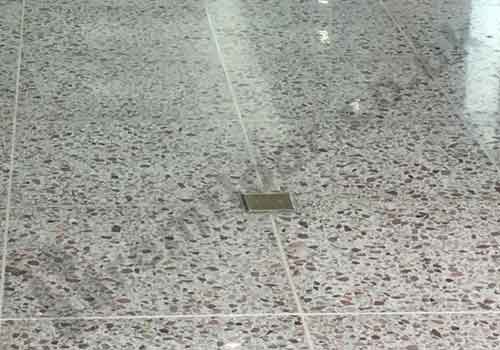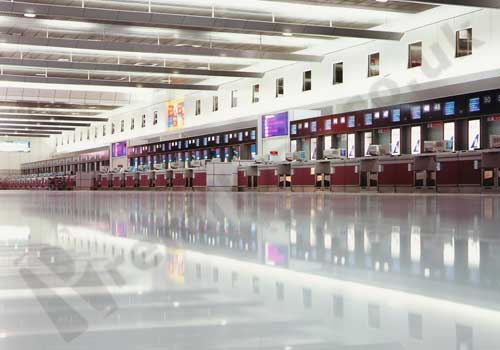
Case Study: 10,000m2 Terrazzo Tile Refurbishment

Warehouse Refurbishment - 10,000m2 Terrazzo Tiles
Description
This building had been a functioning bakery and was being refurbished as part of a delapidation project. Premfloor were directly employed by the UK's largest private commercial landlord, to bring the floor back to an acceptable condition. Working closely with the builders who were charged with the co-incidental upgrading of the superstructure, flexibilty from both parties was crucial.
Summary
Old tiles and damaged concrete were removed
3,000m2 new tiles installed
Over 4,400 holes repaired with epoxy terrazzo
Circa 2,500 LM diamond cutting
Base concrete planed to remove up to 30mm
10,000m2 grind, polish and seal
Man-holes installed
Dates: Jan 2017 - May 2017

Preparation
Demolition & Clearance

The wear and tear resulting from the trading of one of the UKs largest bakeries, was quite substantial. Installation of specialist machinery over the years resulted in severe damage to the terrazzo floor. Removal of the machinery revealed the extent of the damage, and created much more.
Planing

In many locations it became apparent that the screed used during the initial installation was much thinner than the recognised norm nowadays. To ensure that our installation complied with modern specifications, we planed amounts from the over-site concrete varying from 10 to 30mm.
Cutting & Breaking

The overall tile and screed depth was about 75mm. To ensure a neat joint between tiles broken out and new tiles being installed, we used a road-saw at most edges. In smaller locations hand-cutting was utilised.
Tiling & Repairs
Repairing Holes

Traditional terrazzo repairs are carried out with a fast-setting polyester resin. This product is extremely fast setting, but prone to shrinkage when used in bulk applications. Many of the holes were measured at 150mm width and depth. Our preference was for the slower-setting epoxy resin, with colour-matched aggregate. This produced a much higher quality, more durable repair. Preparation was carried out by localised dustless shot-blasting.
Tiling

We installed approximately 30,000 tiles onto a 50mm sand-cement screed. The tiles were in several large patches, and dozens of smaller ones. A proprietary mix was used since site conditions were not conducive to providing our own mix. We utilised a batch-mixing volumetric mixer, working to our own specification.
Grouting

Within 24 hours of tile laying, grouting took place. Grout consists of water, colour-matched white cement and a polymer additive to facilitate some flexibility to the grout. Grout is continually pushed across the joints at intervals, throughout the day ensuring that joints are kept topped up and do not run low
Grinding & Polishing

Where existing tiles are being re-polished, it is generally advisable to use a machine with an identical footprint to that which ground the original installation.( note:- invariably a Terrco grinder) For new tiling there is a range of equipment available.
Sealing

Once the polishing was complete, we applied a densifier to protect the freshly ground terrazzo. This is brushed by hand in several coats, and left to cure for approximatley 1 hour.
Burnishing

After sealing the floor was left to cure for 24 hours. It was then burnished with a high speed ride on machine, leaving the finish you see here, and another satisfied client.

Videos
Related Projects
© 2018 Premfloor (Southern) Ltd - Phone: 0333 3055 147 - Email: info@premfloor.co.uk



